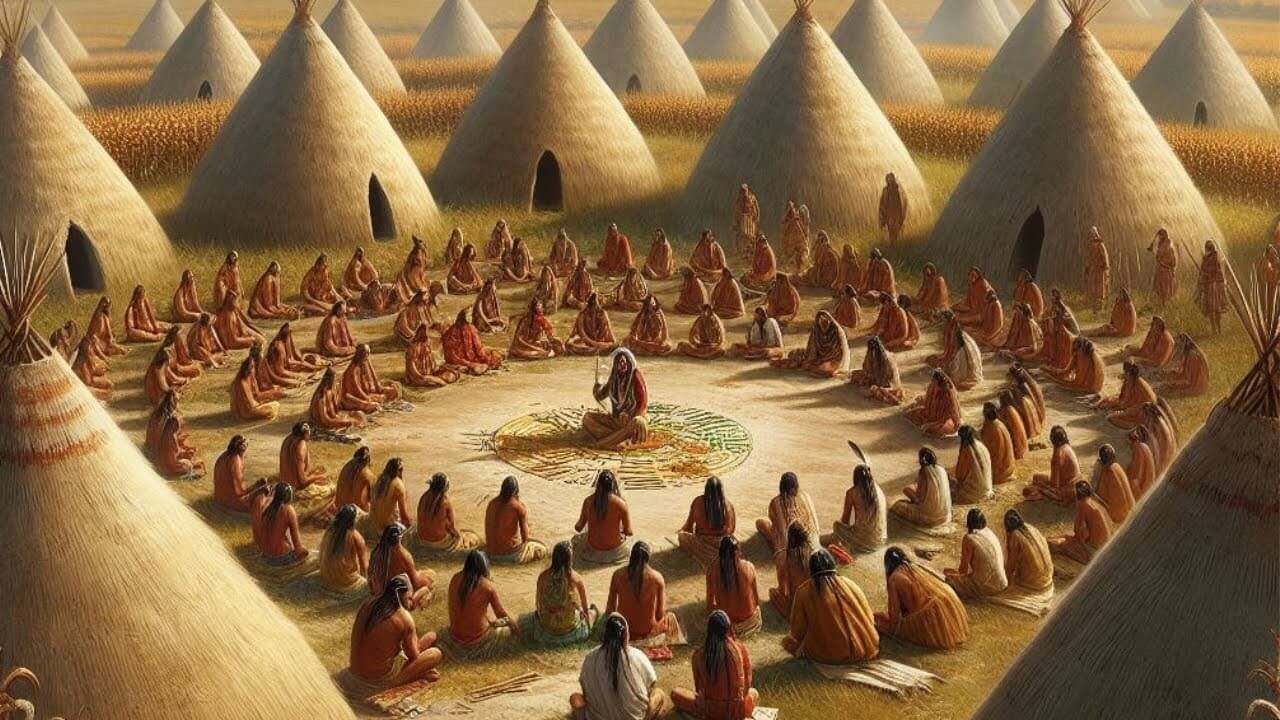The Wichita Nation
The Wichita people, also known as Kitikiti’sh, trace their roots back to the Caddoan linguistic family. Their ancestral lands stretched from the Red River in Arkansas north to Nebraska. They emerged as a distinct group in present-day Oklahoma, Kansas, and Texas.
The Wichita Nation fostered a culture deeply intertwined with the cycles of nature. They were originally hunter-gatherers, moving with both weather and game through the Southern Plains. Around 900 CE, they adopted agriculture, establishing farming villages along the Washita and South Canadian Rivers in present-day Oklahoma. They were known as master traders, building an intricate network of exchange among various indigenous tribes and, later, European settlers.
Their homes were constructed from the prairie itself, crafting grass houses that stood against the Great Plains’ gusts. Their villages were centers of agricultural productivity, where they meticulously cultivated their staple crops of corn, pumpkins, and tobacco. Social structure in Wichita tribes was inextricably linked with the bison hunt. Hunters, revered for their prowess, organized communal hunts crucial to the tribe’s survival and social cohesion.
Archaeological findings have shed light on the Wichita’s past. A Dartmouth-led study using multisensory drones revealed a large circular earthwork at what may be Etzanoa, an archaeological site near Wichita, Kansas. This earthwork may be the remains of a so-called “council circle,” as it is similar to several other circular earthworks in the region.
In another instance, Wichita State University’s Dr. Crystal Dozier led a team of students in a cultural resource management project for the city of Wichita. The team dug holes every 15 meters, unearthing three isolated pieces of lithic debitage, which are pieces that have flaked off in the process of making stone tools.
From their precontact way of life to their current standing, the Wichita’s past encapsulates a saga of persistence and cultural endurance on the North American continent. Their history reflects the broader narrative of indigenous survival and adaptation in the face of expanding European colonization.

